350 Search Results for aided language input
October 20, 2012
by Carole Zangari -
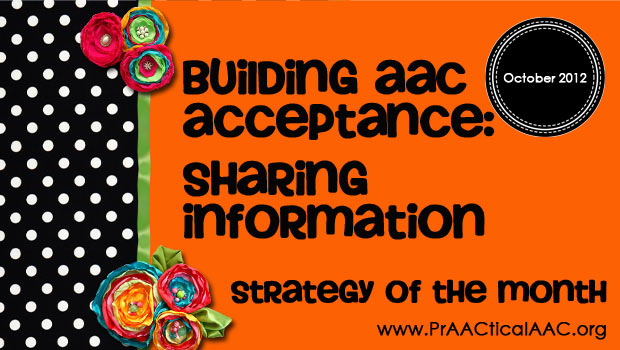
While there are certainly attitudinal barriers to AAC, it’s also true that sometimes the people we are trying to influence just need more information. Sounds simple, right? Not exactly. Especially when we consider these factors. Adult learners prefer to chart their own course to learning new things rather than have others lay that out for them. Our behaviors are most likely to change when we discover solutions for ourselves, as opposed to following directions that others give to us. We have a limited amount of time to guide others to the information they need. Here are some things that have worked for us. Develop a bank of educational materials that pertain to the topics that you face most often in your clinical work. Create resource files for general topics, such as the empirically-supported benefits of AAC, and specific topics, such as the evidence base for using SGDs with individuals who... [Read More...]
October 20, 2012
by Robin Parker -

Sometimes saying ‘no’ to the demands of the day actually helps us rejuvenate and allows us to be more productive. Saying ‘no to false information helps us to advocate for ourselves. The ‘no’ topic seems to be trending now. There have been quite a few blog posts and comments about the issue (Just Say No, How and When to Give Your Students A Break). We are so glad that this topic is getting more focus. Of course everyone agrees that ALL people have the right to say ‘no’. But it is not always so simple. There are many types of ‘no’. There is the outright ‘no’, the ‘no’ to more work, the ‘no’ for disagreement, the ultra important ‘NO’ to unwanted touching, and many more. And depending upon how you say ‘no’ is the difference between it being accepted or… NOT. The issue of saying ‘no’ gets more complicated when... [Read More...]
October 19, 2012
by Carole Zangari -
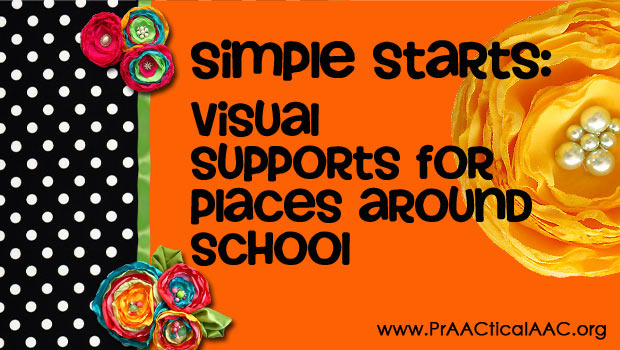
Simple Start is a series of posts that discuss AAC-related tools and strategies that are rather quick and easy to make or implement. Whether you are brand new to AAC or relatively experienced, we all come to a point where complicated just won’t do. – In our first Simple Start, we’re talking about Picture Card Rings, a type of visual support for language comprehension. The National Professional Development Center on Autism Spectrum Disorders defines visual supports as any tool presented visually that can help a person function in their day-to-day life. In this case, we’ve narrowed it down to the specific case of using photos of places around a school to help the student better understand words like ‘cafeteria’ and ‘clinic.’ — Most people with AAC needs do not require a communication system that represents language through photographs. This is a very good thing since there is no way to... [Read More...]
September 2, 2012
by Robin Parker -
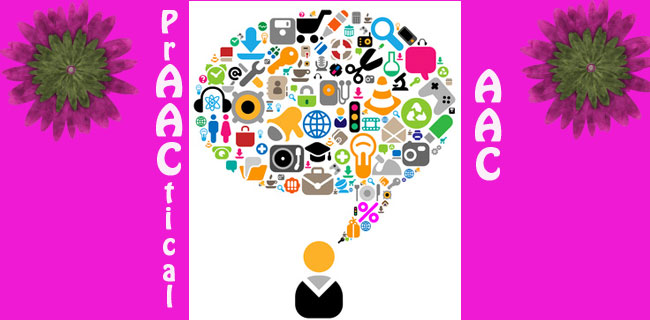
We have recently been surprised (ok, shocked) by the absence of communication supports in educational settings that are supposed to be supporting learners with significant communication challenges. To be even more specific and blunt, the students do not have functional spoken speech. They can’t speak to let you know: what they need, what they don’t need or want, how they feel, what they see, what interests them, what questions they have, what they like and don’t like, when they really reallywant something, etc., etc. etc. And, trust us, they do need to say all of these things. If you work with anyone who does not use spoken speech and we mean ANYONE, they deserve the basic right to communicate with you. Our PrAACtical AAC Absolute A’s: AAC displays need to be accessible ALLOVER. There is no special ‘communication time.’ Communication teaching is ALL the time in authentic situations.... [Read More...]
August 27, 2012
by Carole Zangari -
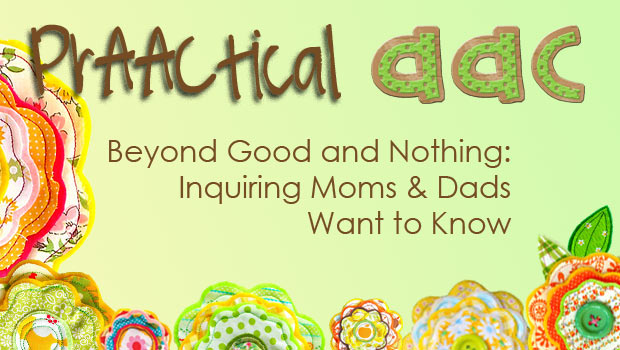
“How was school?” (Good) “What did you do?” (Nothing) This scenario plays out in many cars and kitchens in the after school hours and it can be hard to know who is more frustrated: the kids for being asked or the parents for not getting satisfactory answers. And still, we repeat the process day after day. Of course, we want to know the fine details of what happened and how our children felt, but in some cases, we’d settle for ANY school-related conversation at all. I’ll be the first to admit that it took me way too long to get the hang of how to get information about my children’s school days, and it seemed like just when I did, pow! They were pre-teens and then teenagers. New rule book. Here are some ‘lessons learned’ along the way about those afterschool conversations and some suggestions for parents of the kids... [Read More...]
July 29, 2012
by Robin Parker -
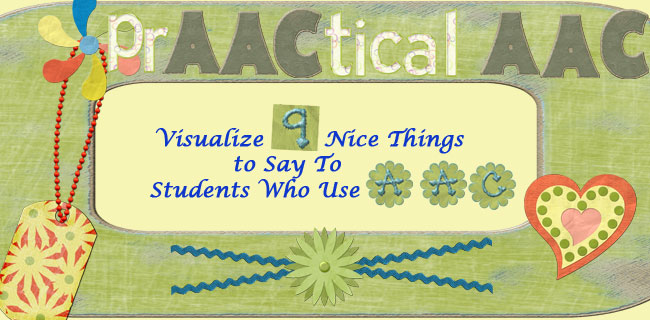
When we first started PrAACtical AAC, Carole wrote a post titled “5 Nice Things To Say To A Student Who Uses AAC”. We thought it was time to update these by adding visual support (and a few extra nice things to say). Why did we want to add visual support? Because then we are able to implement a favorite language facilitation strategy— Aided Language Input (ALI). We try to implement aided language input (ALI) when providing positive specific feedback so the message can be ‘seen and heard’. We can definitely say nice things without visual support (and we do), but when we can, we do. Everyone needs to hear nice things, A LOT. Just ask yourself, do you get all the positive feedback you want? Visualize- 9 Nice Things To Say To A Student Who Use AAC *All images created from Open Clipart Library which is the library for high-quality free clipart and ImageBot. A PDF... [Read More...]
July 14, 2012
by Robin Parker -
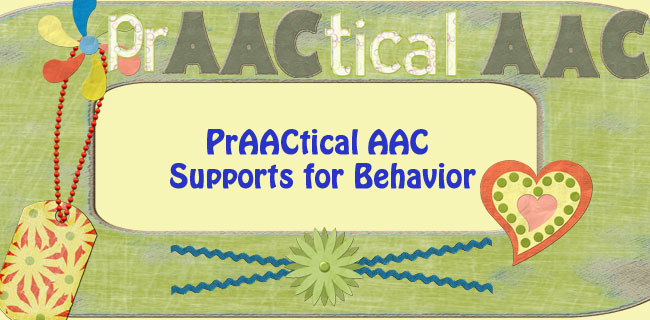
Our July Strategy of the Month, PrAActical AAC Supports for Behavior, is a favorite topic for us, because with a little planning, we can adhere to the old adage that an ‘ounce of prevention is worth a pound of cure’ (as Carole said last week). We also find that behavior challenges are often one of the main reasons, our students (and colleagues) get stressed about working with children with significant communication impairments. And since stress for ANYONE does not make for an optimal learning environment, we love to show how effective preventative strategies work. This week we are focusing on ‘setting the stage’ for conventional and appropriate behavior by engineering the physical environment. We are talking about more than keeping the room neat, clean, and generally organized. We are talking about arranging the physical environment in a planned and careful way in order can make a huge difference in helping... [Read More...]
July 14, 2012
by Carole Zangari -
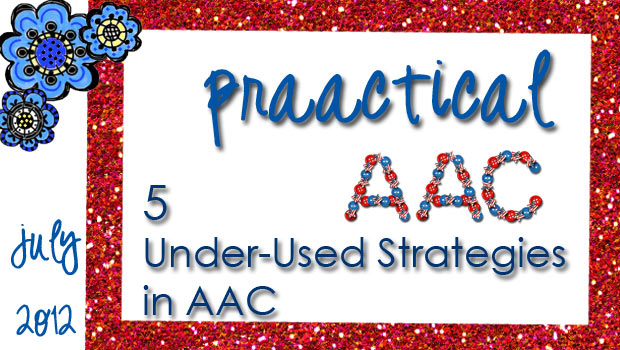
1. Partner-assisted scanning (PAS) offers great flexibility and spontaneity. Don’t want to take your SGD to the beach? A print-out of the screens and PAS is a great option. Missing key messages for the trip to the doctor’s office? A minute of brainstorming and the use of PAS may just save the day. No way for your client to access her device once she’s in bed? A communication board/book and PAS just might do the trick. – 2. Voice banking: For people are likely to lose their speech due to a degenerative disease, like ALS, the option of saving samples of their speech and having it digitized for future use seems to hold great appeal. We’d love to see more SLPs familiarize themselves with this strategy and the tools to implement it, so that this option is more widely used about individuals whose speech is deteriorating. – 3. Qualitative rating... [Read More...]
July 7, 2012
by Carole Zangari -
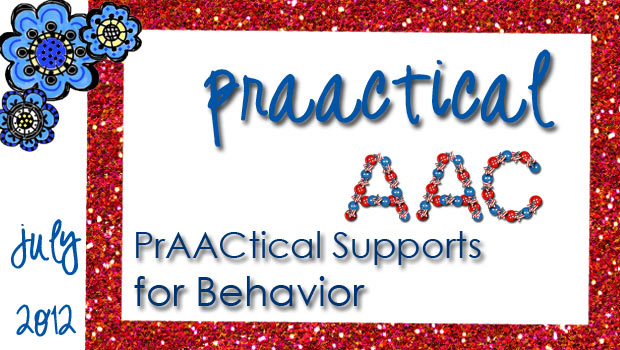
Rachel arrives to therapy tense and upset. Mauro gets frustrated when the clinician presents new activities. Brianna starts to bang the table when demands are placed on her. Zach becomes agitated when he has to wait for something he wants. – Like any set of tools and strategies, AAC works best when the communicator is relaxed, confident, and engaged. Our July Strategy of the Month focuses on PrAACtical Supports for Behavior. We hope to share ideas for planning therapy sessions that help AAC learners stay focused, calm, and engaged. — We’re big believers in the old adage that an ounce of prevention is worth a pound of cure. So, what can we do to prevent or minimize problems like the ones experienced by Rachel, Mauro, Brianna, and Zach? The answers have to do with having clear and appropriate expectations, and using visual and AAC supports effectively. When used consistently, these strategies... [Read More...]
July 2, 2012
by Carole Zangari -

The Fives PrAACtical Suggestions: 5 Ways to Elicit Language Without Asking a Direct Question 5 Tools to Make Aided Language Input Easier “Call Me Later:” 5 Supports for Phone Communication by People Who Use AAC Safety Matters: 5 Resources for People Who Use AAC – PrAACtical Thinking 72 Free and Lite Versions of AAC Apps AAC App Giveaway: It’s a PrAACtical Celebration 7 Apps for Adolescents with Special Needs “Not Dumb Now” (And Actually, Never Was) Pivotal Skills for AAC Intervention: Aided Language Input Before It’s Too Late: A PrAACtical Resource for Emergency Situations PrAACtical Tips for Passing the SLP PRAXIS on the First Try, Part 1 PrAACtical Resources: Making Sense of Picture Symbol Options PrAACtice Fire Safety 25 Under 5: AAC Apps PrAACtical Intervention Ideas: AAC Learning with the Toys, Websites, and Apps You Love PrAACtical Reflections on Father’s Day Introducing RELAAACs: Rubric for Evaluating the Language of Apps... [Read More...]









